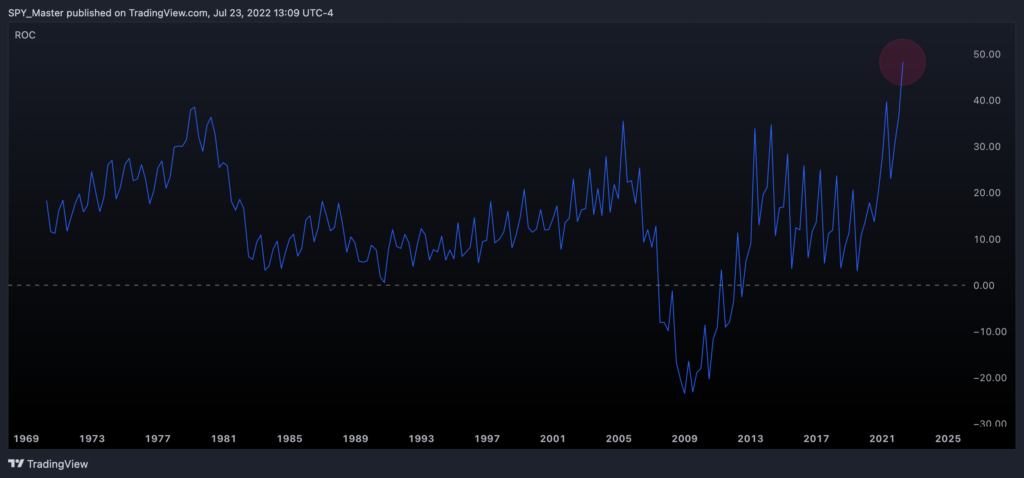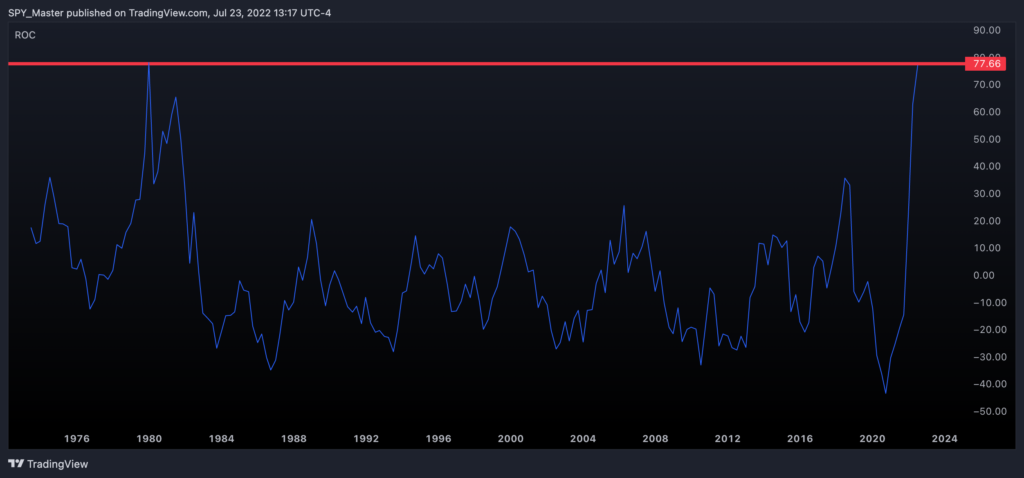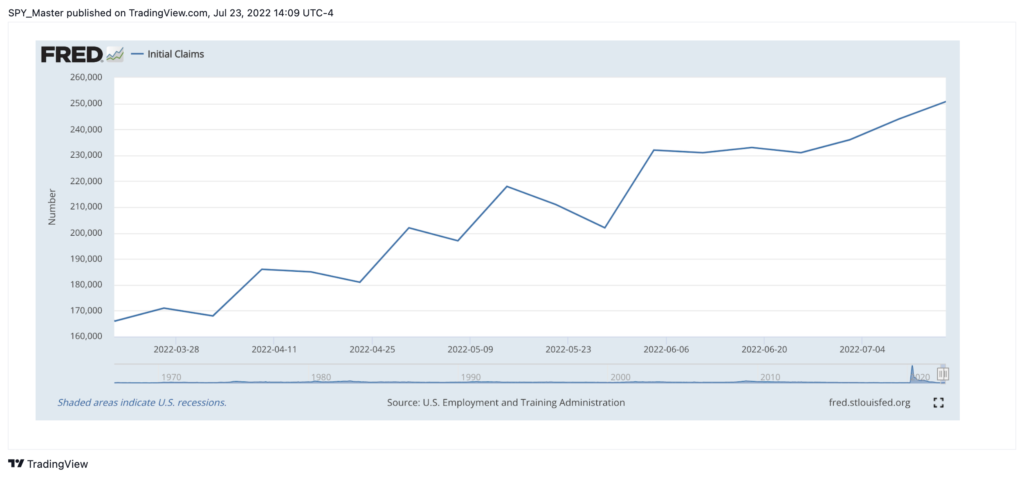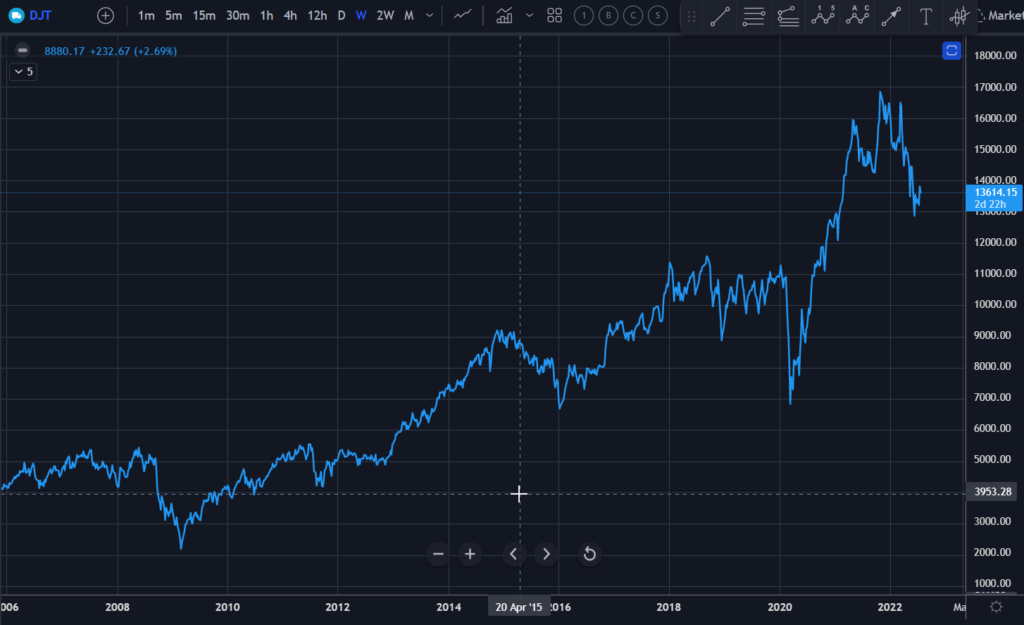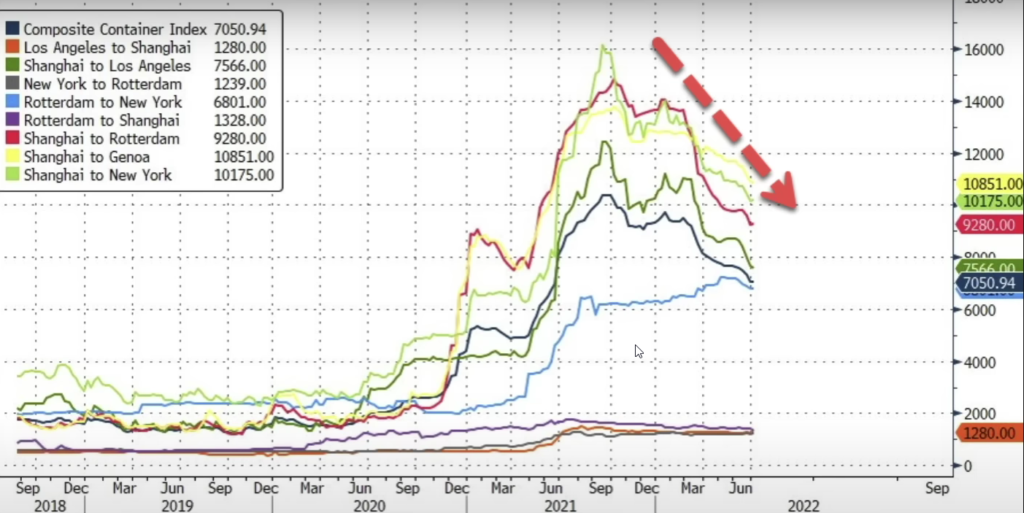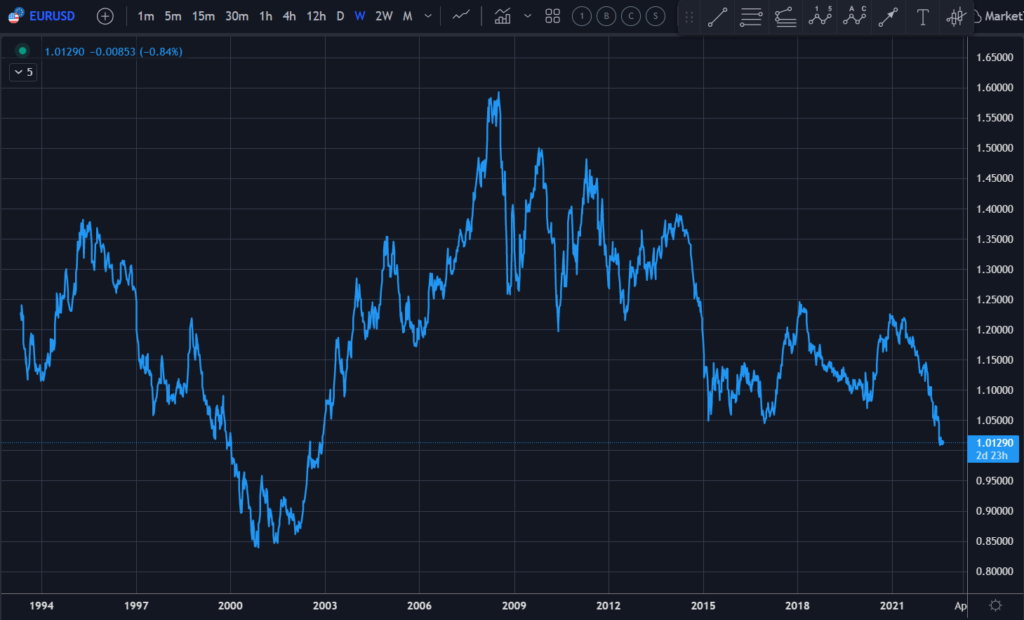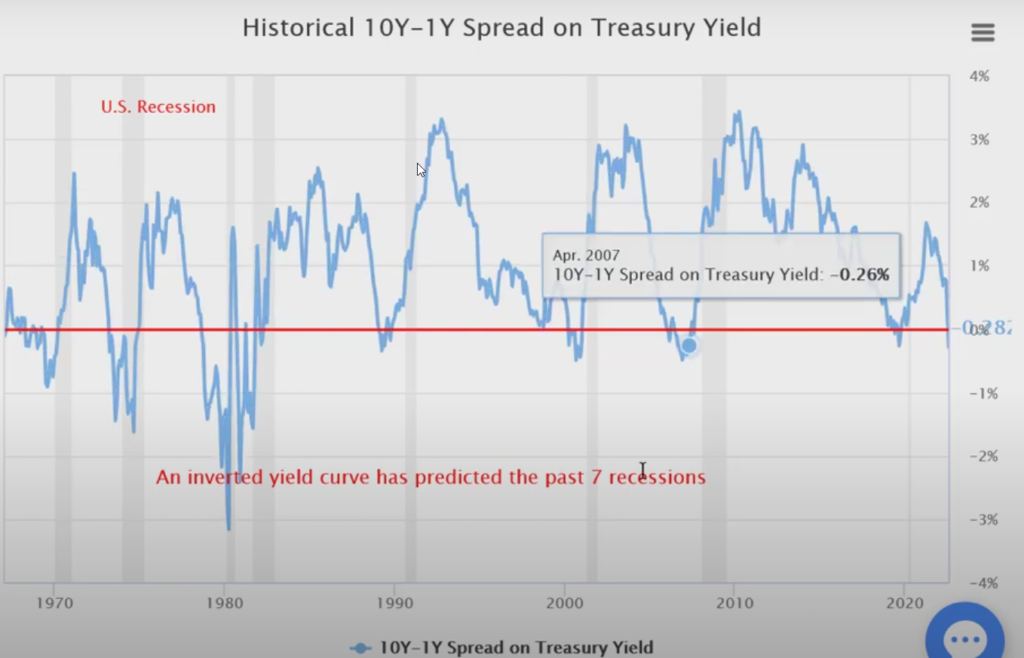To understand the basics of stocks in ‘How Do I Start with Stock Trading?’, you need to know the definition of stocks, types of stocks, and how they work. These sub-sections will provide you the necessary information to develop a foundation in stock trading and help you make informed decisions.
Definition of Stocks
Stocks, also known as shares or equities, are ownership units within a company. They represent a fraction of ownership in the company and confer certain rights such as voting power and dividends.
When you buy stocks, you are essentially buying a portion of the company and becoming a shareholder. The price of stocks fluctuates based on supply and demand in the market. Stocks can be bought and sold on stock exchanges all over the world.
Investing in stocks can provide potential returns on investment, but it also involves risks that should be carefully considered. It is important to do your research and seek professional advice before investing.
Understanding the potential risks associated with investing in stocks can help you make informed decisions about whether or not it’s right for you. Caution is necessary, but the fear of missing out (FOMO) can be a powerful motivator to start your research today.
Stocks are like relationships; some are cheap and won’t last, others are expensive and worth investing in for the long-term.
Types of Stocks
There are various classifications when it comes to the varying Types of Equities. An investor must be knowledgeable about these classifications to understand the kinds of stocks they want to invest in. Here is a table that describes some common types of equities with their unique features and potential risks.
| Type of Stock | Features | Potential Risks |
|---|---|---|
| Common Stock | Voting rights in shareholder meetings, possibility for dividends, and capital appreciation | Lower priority for dividend payout and decreased security compared to bondholders |
| Preferred Stock | Priority during dividend payouts, fixed dividend rate, no voting rights, typically less volatile than common stock | Higher risk in economic downturns because companies can suspend preferred stock dividends |
| Blue-chip Stocks | Large established companies with stable performance records and track records of profit-making over long periods of time. Typically pay dividends. Secure investments that tend to withstand market fluctuations in value. | Less likelihood for significant appreciation due to being already established at their peak performance level. |
It’s important to note that some stocks can fall under multiple categories due to overlapping characteristics. Investors should practice diversification in their portfolio by investing in different types of stocks while keeping personal financial goals in mind.
Understanding how different Types of Equities vary based on factors such as voting power, potential growth, and risks can help investors make informed decisions. Investment decisions must rely on careful research and analysis rather than mere intuition or speculation.
Overall, the wise investment strategy always involves understanding the intricacies behind each type of share before putting down any money. Stocks are like a box of chocolates, you never know what you’re gonna get, but unlike chocolates, you hope it’s not a dentist appointment.
How Stocks Work
Investing in stocks involves buying shares of ownership in a publicly traded company. These shares confer on the holder certain rights, including voting rights and dividends. The price of a stock is determined by supply and demand in the market, fluctuating according to various factors, including the financial performance of the company and broader economic conditions.
Understanding how stocks work requires knowledge of some basic terminology, such as market capitalization (the total value of all outstanding shares), dividend yield (the amount paid out to shareholders as a percentage of the stock price) and earnings per share (the profits earned per outstanding share). Evaluating a stock also involves analyzing financial statements, tracking news impacting the company and its industry and considering overall market trends.
It is important to note that investing in stocks carries risks, including the possibility of losing principal investment. Diversifying holdings among different industries and asset classes can help mitigate risk. Successful investors often have a long-term investment horizon, staying invested for years or decades rather than trying to time short-term fluctuations.
One investor who exemplifies this approach is Warren Buffett, who became one of the world’s wealthiest individuals through decades-long investments in successful companies like Coca-Cola and American Express. Through careful research and a focus on stable companies with sustainable competitive advantages over time, Buffett highlights how understanding basic principles of stocks can lead to success over an extended period.
Education is important, but don’t worry, you don’t need a PhD to understand stocks – just a basic understanding of math and a strong stomach for risk.
Educate Yourself Before Starting
To educate yourself before starting with stock trading, you need to start with learning about the market, researching companies, and understanding financial statements. These sub-sections are essential to build foundational knowledge and expertise to make informed investment decisions.
Learning about the Market
To effectively start investing, it is crucial to acquire extensive knowledge about the market. This includes understanding market trends, evaluating price movements, and analyzing the performance of different industries. Gaining such insights can be achieved through in-depth market research and by staying updated with relevant news and events.
Additionally, learning about the global economy and its impact on various sectors can help you make better investment decisions. By observing how successful investors operate in different markets, one can learn valuable strategies that could boost their chances of success.
It’s essential to note that market conditions are constantly changing, which means continuous learning is necessary to remain abreast of emerging trends and opportunities. Thus, ongoing self-education through seminars, books or online courses is critical for every investor looking to succeed in today’s fast-paced financial world.
A real-life example of the importance of educating oneself is Warren Buffet. The billionaire investor has often emphasized the significance of reading extensively before making any investment decision. He spends almost five hours per day reading newspapers and financial statements to stay up-to-date with current affairs and developments in the business world. Such actions reflect his commitment to continuous learning throughout his career and have contributed significantly to his success as an investor.
Researching companies is like online shopping for a job – except instead of cute clothes, you’re looking for red flags and warning signs.
Researching Companies
Aspiring professionals should conduct thorough investigations into potential employers prior to applying. Utilizing multiple sources, such as company websites, social media platforms, and industry forums, would help gain insight into their organizational culture, values, and mission.
Researching the history of companies will also assist job seekers in understanding the standing of the organization in the market and where they stand amongst their competitors. Job listings and requirements offered by the organization can be used during this research to determine if the available positions align with an individual’s personal career goals.
Additionally, getting in touch with current or past employees for detailed information regarding their experience might yield valuable insights on what to expect from an employer.
By researching ahead of time and building up a pool of knowledge about prospective companies, job candidates can figure out quickly whether they are suited for that given role or not before taking any further steps towards employment. This avoids possible negative consequences and disappointment while ensuring they remain informed about potential opportunities.
Therefore, it is crucial that anyone seeking employment understand how critical researching is throughout their job search. Failure to do so could result in missing out on fulfilling opportunities that may have been available through more targeted approaches to finding work.
Understanding financial statements is like deciphering a cryptic language, but once you crack the code, you’ll be speaking the same language as your accountant.
Understanding Financial Statements
To grasp the fundamentals of interpreting financial data, you must acquaint yourself with ‘Deciphering Financial Reports.’
| Understanding Financial Reports |
|---|
| Balance Sheet |
| Income Statement |
| Cash Flow Statement |
Each document represents a different aspect of an organization’s financial status. The balance sheet assesses its assets and liabilities, while the income statement gives insight into revenue and expenses. Lastly, the cash flow statement details changes in cash reserves.
Apart from these primary documents, consider other aspects such as ratios and trends to establish a comprehensive understanding. Aim to be able to assess essential items like gross profit margin, net profit margin and financial leverage.
Once I worked on a project that required me to study Indian corporates through their books of accounts. Not only did this task evoke curiosity but also allowed me to learn about finance hands-on.
Choosing a broker is like picking a partner, except with less emotional baggage and hopefully more financial rewards.
Choosing a Broker
To choose the right broker for your stock trading journey, you need to consider various factors. In order to do this successfully, this section ‘Choosing a Broker’ with its sub-sections – ‘Types of Brokers’, ‘Factors to Consider While Choosing a Broker’, and ‘Opening an Account’ – will provide you with the necessary information and knowledge to make an informed decision.
Types of Brokers
For individuals looking to invest in the financial markets, it is essential to understand the various types of brokerage services available. Brokers can be categorized based on the services they provide and the fees they charge.
The following Table presents an overview of the three main types of brokers: full-service brokers, discount brokers, and online brokers.
| TYPE OF BROKER | SERVICES PROVIDED | FEES CHARGED |
|---|---|---|
| Full-Service Brokers | Personalized Investment Advice, Portfolio Management, Research Reports | High Commission Fees and Maintenance Charges |
| Discount Brokers | Asset Trades Execution, Educational Resources | Lower Commission and Maintenance Charges |
| Online Brokers | Trading Technology Platform, no Investment Advice | Low Commission Fees |
It is important to note that each type caters to a different type of investor with specific needs. For example, full-service brokers offer comprehensive services but come at a higher costs while discount brokers may have limited offerings but charge lower prices.
Finally, consider the story of a novice investor who mistakenly paid high commission fees through a full-service broker when their investment goals could have been met by using a different type of broker.
Understanding and choosing the right broker for you can make all the difference in achieving financial success.
Choosing a broker is like choosing a spouse, except with less romance and more financial risk.
Factors to Consider While Choosing a Broker
In selecting a broker, several critical elements should be evaluated to ensure optimal investment outcomes. The following are the crucial considerations to make when choosing a brokerage firm:
| Factors | Description |
| Account minimums and fees | Evaluate the costs of opening and maintaining an account with a broker. |
| Trading tools and platform | Select a broker that offers access to advanced research tools and user-friendly trading platforms. |
| Investment products | Determine if the broker provides access to diverse investment products such as stocks, bonds, mutual funds, ETFs, options, or currencies. |
| Customer service and support | Evaluate the quality of customer support features like phone or chat support and educational resources provided by the broker. |
To make an informed decision when choosing a broker, it’s essential to review independent rankings based on specific criteria like value for your money, technology, user experience, order execution speed, as well as fees charged by brokers.
Finally, don’t miss out on opportunities due to suboptimal brokerage choices. Choose wisely!
Opening an account: Because your mattress isn’t a safe place to stuff all your cash.
Opening an Account
To start investing, creating a brokerage account is the first step. To make an account with your preferred broker, follow this guide:
- Research different brokers and see which ones suit your needs.
- Select ‘Open an Account’ or its variation on the Broker’s website.
- Fill in personal details like name, address, phone number etc. Completing a Know Your Customer (KYC) form may also be required by some brokers.
- Submit scanned copies of identification documents like driver’s license, passport, or any other government-issued ID card to verify your identity.
- Fund the account with enough money to satisfy deposit requirements or minimum balance conditions.
Note that some agents may require additional steps to complete the account opening process. When funding the account, consider deposit method options. You may choose between electronic funds transfer (EFT), wire transfer, paper check, digital wallet transfers may also available through various channels. Don’t forget to read all terms and conditions because they vary vastly from one brokerage firm to another and can have a significant impact on how you trade shares. Stay informed!
Developing a strategy is like going to war – without a plan, you’re just a sitting duck ready to be shot down by the markets.
Developing a Strategy
To develop a strategy for stock trading with the sub-sections Short-term vs Long-term Investments, Setting Goals and Risk Tolerance, and Diversifying Your Portfolio. It’s important to have a plan before diving into the unpredictable world of stock trading. By considering the type of investments you’re interested in, setting clear goals based on your personal risk tolerance, and spreading your investments across different sectors, you can create a solid strategy to guide your stock trading decisions.
Short-term vs Long-term Investments
Investment Planning for the Short and Long Run
Investment planning is the backbone of personal finance. Having a strategy for investing is imperative, but it’s about finding the right balance between short-term and long-term investments. Short-term investments are typically those that mature within one year, while long-term investments generally have a maturity of five to ten years.
To understand the differences between short and long term investment, let’s create a table outlining their main characteristics.
| Short-Term Investments | Long-Term Investments |
|---|---|
| Low risk | Higher Risk |
| Low returns | Higher Returns |
| Easy liquidity | Less Liquid |
| Less time commitment | More Time Commitment |
As you can see in the chart above, short-term investments have lower risks and returns, while being more liquid and requiring less time commitment. On the other hand, long-term investments require more risk, offer higher returns in comparison with short term investments. However, it cons down when it needs more time than shorter ones.
It’s important to note that there is no universal approach to financial planning as everyone has different goals and needs. Therefore, it’s essential to consult with a financial advisor before making any decisions.
Interestingly enough, investing dates back over 4,000 years – the history itself reveals how crucial it was even back then! In ancient times people would invest through bartering goods; now we can do it through stocks or properties – things sure have come a long way since then!
The best way to ensure success in setting goals is to aim for the stars, but make sure to bring a parachute just in case your risk tolerance isn’t as high as you thought.
Setting Goals and Risk Tolerance
Setting Objectives and Defining Risk Tolerance
Developing an investment strategy involves setting realistic goals and deciding on the level of risk you are willing to tolerate. This entails identifying your key objectives, such as generating income or achieving long-term growth. Once these have been established, it is essential to assess your risk tolerance. This includes evaluating factors such as your investment horizon and financial situation.
To create a well-balanced investment strategy, adjust your asset allocation to align with your investment goals and risk tolerance. A balanced portfolio should comprise various asset categories, such as stocks, bonds, and commodities. Diversification helps manage risk while enabling you to capture returns from multiple investments.
To achieve long-term financial goals sustainably, review your portfolio periodically and rebalance as necessary. Rebalancing entails selling assets that have performed well while buying those that have faltered. Ultimately, setting clear objectives while identifying potential risks will help you develop an effective investment strategy that suits your needs and preferences.
To build a successful investment strategy requires being aware of one’s strengths and weaknesses along with expert knowledge in finance-related aspects. Consulting or hiring an expert in finance can help form strong strategies further on balancing risks while providing high returns with negligible risks where possible.
Putting all your eggs in one basket is a risky strategy, unless you’re trying to make an omelette of all your investments.
Diversifying Your Portfolio
One key aspect of a successful investment strategy is to broaden your financial holdings rather than concentrating solely on one asset class. An effective way to achieve this is through broadening your investment portfolio using multiple financial-assets including stocks, mutual funds, bonds, and real estate in the same portfolio can ensure that you’re not relying solely on a single strategy. This approach can help you weather market ups and downs and avoid excessive risks.
Many professionals see Diversifying Your Portfolio as the foundation of their investment strategies. The idea behind it is simple: If you invest all your financial resources in a single asset or an industry, both positive and negative developments may significantly affect your overall returns. By spreading investments across different sectors and geographic regions, you can balance risk and return while reducing the impact of an individual sector’s performance.
Managing your assets with a diversified portfolio reduces volatility over time to prevent deep fluctuations in value when economic conditions shift suddenly. Historically proven through research reports provided by well-known financial-institutions shows that inclusive financing incorporating purposefully allocated investments saw bigger returns and lower volatility.
When John Rockefeller founded Standard Oil in 1870s he made the most of diversification in building his great fortune. He spent years researching new ways to apply his knowledge instead of relying on only a single oil drilling operation to minimize operational risks daily. The result of that was creating one of the largest empires ever seen by expanding after investing profits from refining operations into shipping, railroads, and other related avenues for success over time.
Placing your first trade is like jumping off a cliff – exciting, terrifying, and hopefully not fatal.
Placing Your First Trade
To place your first trade with confidence in stock trading, you need to understand the different types of orders. In this section, placing your first trade, we discuss how to place a market order, a limit order, and exercise caution while trading. Get ready to start your trading journey with ease!
Placing a Market Order
To execute an order for a trade, one can place a Market Order which executes immediately at the current market price.
Four steps to place a Market Order:
- Log in to the trading platform provided by the broker.
- Select the desired asset and click on Buy/Sell.
- Enter the quantity you wish to trade and confirm the order details shown on the screen.
- The trade will be executed instantly based on current market conditions.
It’s worth mentioning that slippage may occur due to change in market conditions between placing and executing an order. Thus, it’s important to use risk management tools like stop-loss orders.
Take control of your finances now by placing your first ever Market Order! Don’t let fear stop you from taking action today.
If you’re feeling limited in your trading abilities, fear not – placing a limit order is here to save the day (and your portfolio).
Placing a Limit Order
Placing an Order with a Set Price
To place an order with a set price, use the limit order option. This ensures that you buy or sell only when the stock price reaches your pre-defined level.
Here’s how to make it happen:
- Choose the stock you want to trade on
- Select the ‘Limit Order’ option
- Enter the price at which you want to buy or sell
- Set the expiry date and time for your order to execute
- Click ‘Buy’ or ‘Sell’
By using this process, you can place an exact price on your stock trade with minimal risk.
Placing a Stop-Loss Order helps protect yourself from loss by buying or selling crypto automatically if it dips more than your set limit.
It’s significant to know that these orders do not guarantee fulfillment since there are time constraints & market conditions involved.
According to “The Wall Street Journal,” placing a Limit Order means controlling risks while investing in stocks.
Trading without caution is like jumping out of a plane without a parachute – it may seem like a rush, but the landing won’t be pretty.
Exercise Caution While Trading
As a beginner, it’s vital to exercise prudence and caution while making your first trade. It is essential to analyze the market trends and make informed decisions rather than being impulsive.
In this regard, one should proceed with caution while investing in volatile stocks or when emotions cloud their judgment. Implementing sound financial management practices, such as setting loss limits beforehand and using stop orders, can help maintain discipline.
Furthermore, seeking advice from seasoned traders or financial advisors can prove beneficial as they possess adequate industry knowledge and experience.
By exercising caution while trading, investors can avoid making costly mistakes.
Case studies suggest that many novice traders make rash decisions without proper research, leading to significant monetary losses. Therefore it’s crucial to take every precaution necessary before making a trade by analyzing market trends thoroughly.
Watching your investments is like stalking your ex on social media – it can be obsessive, but sometimes it pays off.
Monitoring Your Investments
To monitor your investments with the right approach, follow these tips in the section titled “Monitoring Your Investments” in the article “How Do I Start with Stock Trading?”. In this section, you will learn how to track your portfolio performance, evaluate your investments regularly and make necessary changes to your strategy.
Tracking Your Portfolio Performance
For effective investment management, keeping an eye on the performance of your portfolio is necessary. It enables you to identify opportunities and mitigate risks using factual data.
To track your portfolio performance, creating a table can be helpful. Include columns such as asset type, purchase date, purchase price, current value, and return rate. Analyzing the information in this table helps you make sound decisions based on real-time data.
In addition to tracking your portfolio performance through a table, it’s important to review historical trends. Check for inconsistencies or irregularities in your data as they may indicate areas where further analysis is needed. This review is an essential step towards formulating informed investment strategies.
It’s best practice to regularly monitor changes in your investments’ performance and perform immediate corrective actions when necessary. Consider setting achievable goals and frequencies for reviews – weekly or monthly being typical options – depending on the types of investments involved.
By monitoring investments regularly and being proactive in making adjustments when needed, investors can ensure their portfolios continue to meet their financial objectives. Keep a close eye on your investments, unless you want to be surprised with a retirement fund that’s more empty than a deserted amusement park.
Evaluating Your Investments Regularly
To ensure your investments are performing as expected, it is crucial to constantly assess their progress. Regularly checking the performance of your investments will give you a better insight into market trends and help you make informed decisions for the future.
Evaluating Your Investments Regularly:
- Keep track of market fluctuations and relevant news that may impact your investments.
- Analyze the risk and return of individual stocks, bonds or other investment products.
- Determine the cost incurred in buying/selling shares and funds.
Furthermore, ensuring that your portfolio is diversified cannot be emphasized enough. Diversification can protect against negative impacts from a poorly performing asset class.
It’s important to note that evaluating investments should not be a one-time activity but rather an ongoing process. Analyzing market trends, assessing the strengths/weaknesses of investment products is crucial to avoid potential risks.
To ensure continuous evaluation:
- Set alerts for notable changes in share prices or other stats regarding stocks, bonds or funds in which you have invested.
- A change in investment patterns (such as age, income) warrants a review to estimate if they’re consistent with your overall goals or not.
- Avoid making impulsive trade decisions based on short-term market volatility. Stick to long-term strategies instead, it’s much safer this way.
Overall, monitoring investments regularly could help you seize opportunities to grow your financial assets while avoiding potential losses from poor-performing portfolios. Being proactive and diligent when it comes to matters involving finances is always key. If your investment strategy is like a bad haircut, don’t be afraid to make necessary changes before it becomes a mullet.
Making Necessary Changes to Your Strategy
Investment strategies need constant monitoring and updating. Keep track of your investments regularly to make necessary adjustments to your approach. Consider revising your plan if you spot changes in market trends, starting with adjusting the asset allocation.
It’s essential to ensure that your portfolio aligns with your financial goals. With Evolutionary algorithms, you can analyze historical data and optimize potential returns. A professional advisor will help you understand performance risks and guide you through making informed investment decisions.
To secure better returns, investors must be proactive throughout their journey. Stay informed about emerging market trends, diversify your portfolio, and gradually increase the stock component as risk tolerance increases.
As a responsible investor, it is crucial to monitor the health of your investments periodically. Rebalancing after every once in a while will protect against any sudden shocks. Review fees regularly and assess whether active management is necessitating or index fund investing makes more sense.
Fear Of Missing Out(FOMO) is real in Investing; however, panicking due to market volatility often leads to skewed decision-making processes and rash judgments. By employing a competent Analytics software or hiring an expert advisor, investors can continuously evaluate and act on their analysis findings calmingly. Following best practices is like wearing a seatbelt while driving – it may not be fun, but it could save you from a financial crash.
Following Best Practices
To follow the best practices while starting with stock trading, you should ensure to avoid common mistakes, stay disciplined, and increase your knowledge and skills. These sub-sections are solutions to enhance your stock trading skills and gain financial stability in the long run. With a sharp focus and relentless effort, you can make informed decisions and minimize risks associated with stock trading.
Avoiding Common Mistakes
In order to Enhance Performance Despite Adverse Influences, it is essential to avoid several widely-made blunders.
- Make clear goals and analyze workflow effectively; as failing to define proper goals leads to multiple errors.
- Be attentive towards project details and follow rigorous project management practices.
- Implement the latest technology with caution as adopting recent developments without proper assessment can lead astray.
- Evaluate success or failure of a certain approach before making decisions based on mere guesswork.
- Value feedback from stakeholders and observe the team’s morale closely for unanticipated concerns.
Additionally, maintain transparency and coordination in decision-making amongst all team members. Finger-pointing blame games should be avoided at all costs in case of unsuccessful outcomes. Remote collaborations must involve secure channels of communication along with regular check-ins to summarize progress. In dealing with time-sensitive projects it is crucial to not neglect quality control by adhering only to deadlines.
Lastly, a recent study published by Forbes highlights the efficacy of learning directly from customers’ experiences when seeking improvement rather than solely relying on internal metrics.
Discipline is like a muscle, the more you use it, the stronger it gets. But unlike your biceps, no one wants to see you flex your discipline.
Staying Disciplined
Maintaining Consistent Efforts
To succeed in following best practices, it is crucial to maintain consistent efforts. Staying disciplined requires a strong mindset and dedication towards achieving the desired goal. One can achieve this by prioritizing tasks, setting achievable goals, and creating a schedule.
Moreover, a to-do-list empowers an individual to remain focused on their goals and track progress daily. Another significant aspect is allocating time for self-improvement and making proactive decisions about personal development.
A significant approach towards staying disciplined is fostering patience and perseverance while dealing with challenges that come along the way. Celebrating small wins and using them as motivation will ultimately lead towards achieving success.
A team of professionals once shared their experience tackling a complex software project. The team had to stay disciplined and adhere to best practices despite facing various technical difficulties resulting from the project’s scale. With focus on discipline and perseverance, they achieved success upon completion of the project, which was highly appreciated by the client.
Learning is like a never-ending game of Tetris, the more knowledge and skills you acquire, the easier it is to fit everything into place.
Increasing Your Knowledge and Skills
Developing Your Expertise:
Building expertise involves a journey of continuous learning and exploration. Delving into different channels like books, online courses, and workshops can contribute to your knowledge and skill-set development. Gaining diverse experience across industries can enhance problem-solving abilities and provide new perspectives on familiar tasks.
Staying Updated with the Latest Trends:
Keeping up-to-date with the latest trends is necessary in any industry and helps you stay ahead of competitors. Reading blogs, attending conferences or joining professional organizations can keep you updated with the emerging trends. This information helps in integrating innovative ideas into practical implementations that add value to client success.
Networking for Growth Opportunities:
Networking provides opportunities for growth, feedback from industry experts, business collaborations and increased business exposure. Build connections by attending relevant events such as seminars, conferences or webinars. Joining industry-specific community groups online or offline offers endless networking possibilities within a mutual interest group.
These practices provide impetus towards individual growth while providing competent traction in professional endeavors. Promoting constant learning through niche-specific media ensures staying competitive in today’s rapidly changing environment of technology-led progress. Following best practices may not guarantee success, but ignoring them almost certainly guarantees a disaster in waiting.
Conclusion
Starting in stock trading can be challenging and overwhelming, but with the right knowledge and resources, it is possible to succeed. To get started, research the market, develop a solid strategy, and practice using virtual trading platforms. Additionally, consider seeking advice from professionals or joining investment groups for support and guidance. Remember that success in stock trading requires patience, discipline, and continuous learning. Start small and gradually grow your portfolio over time.
A critical aspect of stock trading success is understanding market analysis techniques such as technical and fundamental analysis. Technical analysis involves tracking trends in stock prices to identify patterns that indicate future moves while fundamental analysis examines a company’s financial health to determine whether it’s undervalued or overvalued. Utilizing both techniques provides an edge when making informed decisions on which stocks to buy or sell.
It’s essential to manage risk effectively when trading stocks by diversifying your portfolio across different sectors and asset classes. Avoid investing too much in one area of the market and always do your due diligence before making any investment decisions. Keep up-to-date with news and events that may impact your investments while maintaining a long-term outlook towards achieving financial goals.
In 1929 during the Great Depression, the stock market crash wiped out millions of dollars overnight causing widespread panic among investors leading to significant economic losses worldwide. This event highlights the importance of proper research, planning, and risk management when investing in stocks today.
Frequently Asked Questions
1. What is stock trading?
Stock trading is the buying and selling of shares in publicly traded companies on a stock exchange. The purpose of stock trading is to make a profit by buying stocks when they are undervalued and selling them when they are overvalued.
2. How do I get started with stock trading?
The first step to getting started with stock trading is to educate yourself. Read books, blogs, and news articles about the stock market. You’ll need to open a brokerage account, so research different brokers to find one that meets your needs. Once you’ve done your research, you’ll need to decide how much money to invest and start building a portfolio.
3. How much money do I need to start trading stocks?
The amount of money you need to start trading stocks depends on the brokerage firm you use and the stocks you want to invest in. Many brokers have a minimum investment amount, typically between $500 and $2,000. However, it’s important to remember that investing in the stock market always carries a level of risk, so it’s important to only invest what you can afford to lose.
4. What kind of stocks should I invest in?
The stocks you should invest in depend on your investment objectives and risk tolerance. Some investors prefer to invest in blue-chip stocks, which are stocks in large, well-established companies with a history of stable growth. Other investors may prefer to invest in tech or biotech stocks with high-growth potential. It’s important to do your research and only invest in stocks that align with your investment strategy.
5. How do I know when to buy or sell stocks?
Knowing when to buy and sell stocks is a skill that takes time to develop. Many investors use technical analysis to identify trends in the stock market and determine the best time to buy or sell stocks. Others use fundamental analysis to evaluate a company’s financial health and identify stocks that are undervalued. It’s important to have a solid understanding of both strategies and to make investment decisions based on your own research and analysis.
6. What are the risks of stock trading?
Stock trading always carries a level of risk, and there is a chance that you could lose money. Stock prices can be affected by a variety of factors, including economic conditions, company news, and global events. It’s important to have a diversified portfolio and to only invest what you can afford to lose. It’s also important to stay informed about your investments and to make educated decisions to minimize your risk.
